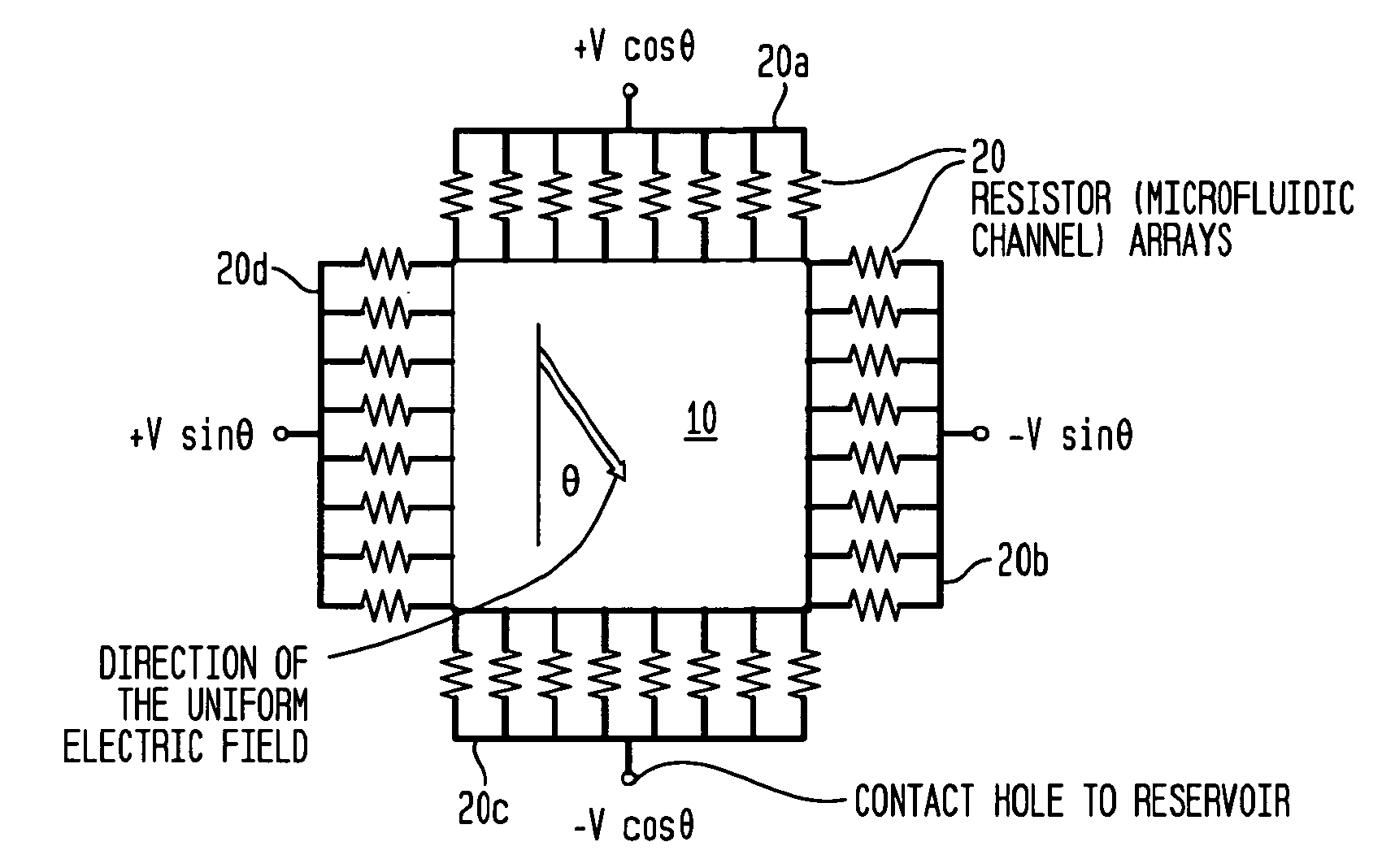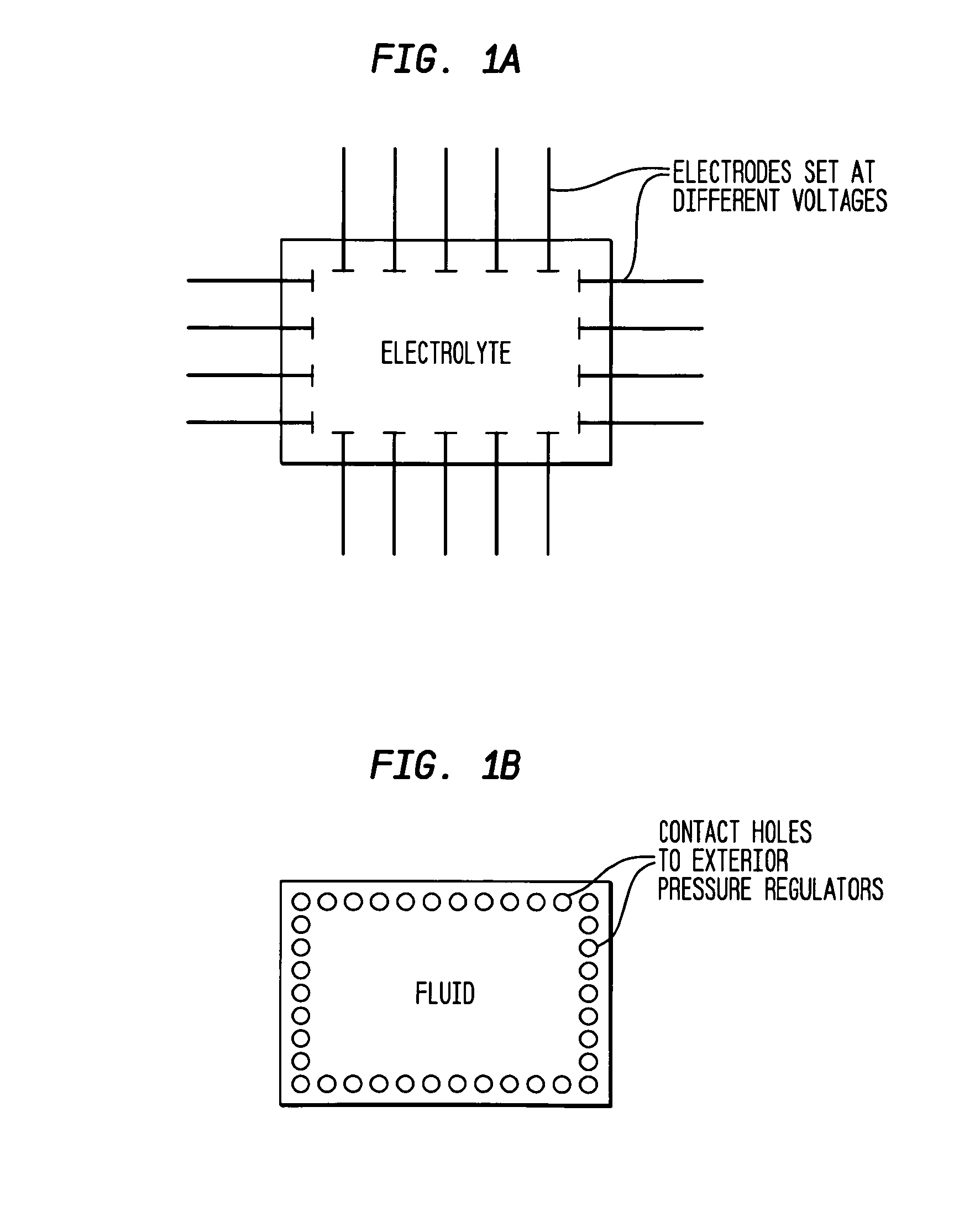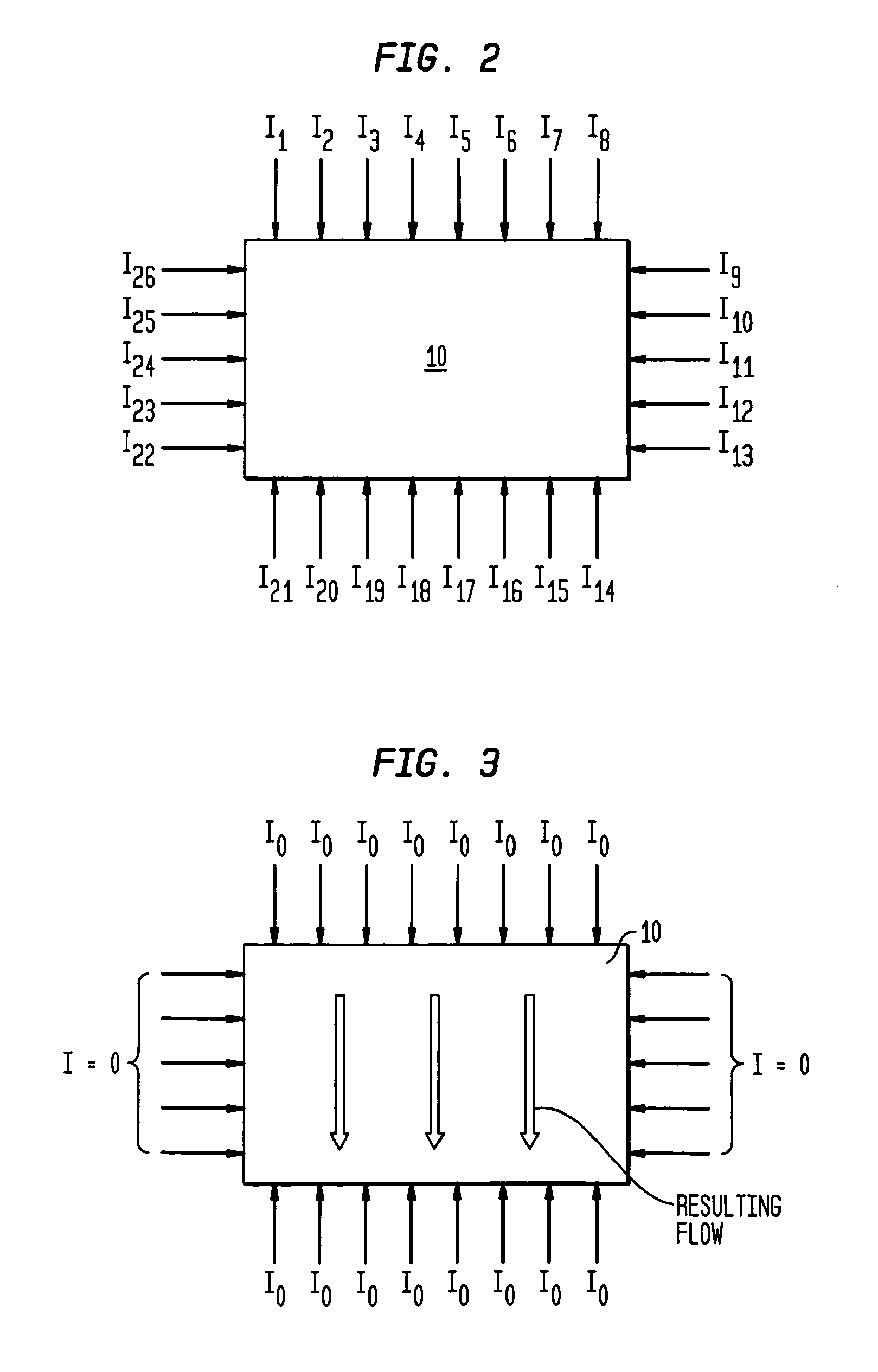Method and apparatus for generating electric fields and flow distributions for rapidly separating molecules
a technology of electric field and flow distribution, which is applied in the direction of machines/engines, liquid/fluent solid measurement, peptides, etc., can solve the problems of high field distortion, unhomogeneous field near the electrode, and chef method that is inappropriate for fluidic applications, etc., to achieve rapid separation and movement of molecules
- Summary
- Abstract
- Description
- Claims
- Application Information
AI Technical Summary
Benefits of technology
Problems solved by technology
Method used
Image
Examples
Embodiment Construction
[0044]The present invention relates to a method and apparatus for generating electric fields and flow distributions in fluidic arrays for rapid separation of molecules, such as DNA. Electric currents are injected into a two-dimensional region (i.e., a chamber, matrix, array, or other structure having microposts, etc.), allowing the molecules to be separated and / or moved according to size. The fields are established by current injection using arrays of resistors or fluidic channels connected to sides of the region. Flow distributions can be generated in the region using fluidic microchannels without an electric field to move and / or separate molecules. Optionally, the separated molecules can be channeled into one or more reservoirs connected to the region via the fluidic microchannels. The invention can be microfabricated on fused silica glass, operates at orders of magnitude faster than conventional methods, and can be utilized to detect diffusions coefficients, or other properties o...
PUM
| Property | Measurement | Unit |
|---|---|---|
| sizes | aaaaa | aaaaa |
| widths | aaaaa | aaaaa |
| etch depth | aaaaa | aaaaa |
Abstract
Description
Claims
Application Information
 Login to View More
Login to View More - R&D
- Intellectual Property
- Life Sciences
- Materials
- Tech Scout
- Unparalleled Data Quality
- Higher Quality Content
- 60% Fewer Hallucinations
Browse by: Latest US Patents, China's latest patents, Technical Efficacy Thesaurus, Application Domain, Technology Topic, Popular Technical Reports.
© 2025 PatSnap. All rights reserved.Legal|Privacy policy|Modern Slavery Act Transparency Statement|Sitemap|About US| Contact US: help@patsnap.com



